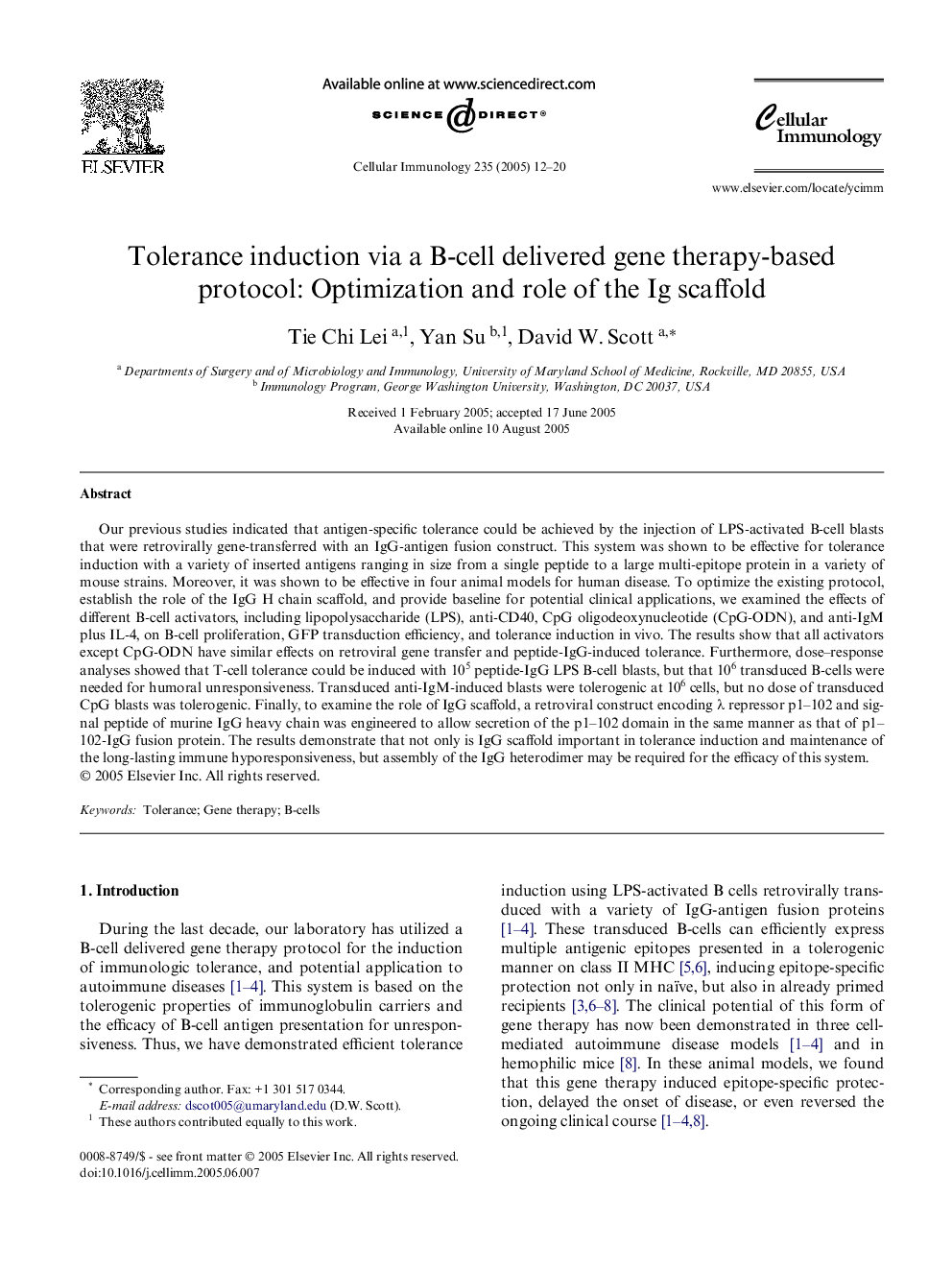| Article ID | Journal | Published Year | Pages | File Type |
|---|---|---|---|---|
| 10927151 | Cellular Immunology | 2005 | 9 Pages |
Abstract
Our previous studies indicated that antigen-specific tolerance could be achieved by the injection of LPS-activated B-cell blasts that were retrovirally gene-transferred with an IgG-antigen fusion construct. This system was shown to be effective for tolerance induction with a variety of inserted antigens ranging in size from a single peptide to a large multi-epitope protein in a variety of mouse strains. Moreover, it was shown to be effective in four animal models for human disease. To optimize the existing protocol, establish the role of the IgG H chain scaffold, and provide baseline for potential clinical applications, we examined the effects of different B-cell activators, including lipopolysaccharide (LPS), anti-CD40, CpG oligodeoxynucleotide (CpG-ODN), and anti-IgM plus IL-4, on B-cell proliferation, GFP transduction efficiency, and tolerance induction in vivo. The results show that all activators except CpG-ODN have similar effects on retroviral gene transfer and peptide-IgG-induced tolerance. Furthermore, dose-response analyses showed that T-cell tolerance could be induced with 105 peptide-IgG LPS B-cell blasts, but that 106 transduced B-cells were needed for humoral unresponsiveness. Transduced anti-IgM-induced blasts were tolerogenic at 106 cells, but no dose of transduced CpG blasts was tolerogenic. Finally, to examine the role of IgG scaffold, a retroviral construct encoding λ repressor p1-102 and signal peptide of murine IgG heavy chain was engineered to allow secretion of the p1-102 domain in the same manner as that of p1-102-IgG fusion protein. The results demonstrate that not only is IgG scaffold important in tolerance induction and maintenance of the long-lasting immune hyporesponsiveness, but assembly of the IgG heterodimer may be required for the efficacy of this system.
Keywords
Related Topics
Life Sciences
Biochemistry, Genetics and Molecular Biology
Cell Biology
Authors
Tie Chi Lei, Yan Su, David W. Scott,
